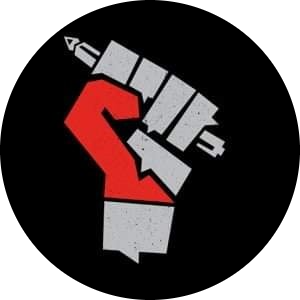Nishta N.
In his book, Poet of the Revolution, Lal Singh Dil writes-
Once, for instance, following a Brahmin who resembled Tagore, I entered the little pool of water by the well where the Jat boys were bathing. I must have been in either Class 2 or 3. I was wearing a dirty shirt and torn drawers. The water drawn from the well was flowing in a torrent from a spout and I had just crouched down to put my head under the water when a Jat boy pulled me out and gave me a thrashing. Nothing happened to him, of course. Instead, my mother had to apologize to his mother for my dreadful mistake of entering the sacred space of the upper caste. She admonished me and told me never to go there again. By narrating this incident, I’m not trying to establish that the powers that he had wanted me to be beaten thus; nor do I want to credit it to fate. What I am trying to say is that this experience was essential to my understanding of the world around me.
Lal Singh Dil was born in Samrala, Ludhiana, in a family that was considered a part of the Ramdasia Chamar (tanner) caste. Born in abject poverty, Dil spent his childhood herding cattle for roti and a paisa. His mother, however, made sure that he went to school. He was the first in his clan to pass class X, and his mother sold her earrings to send him to college to train as a schoolteacher.
Before I delve a little deeper into his life, the reason I wanted to write about him was that 14 August marks his death anniversary. Lal Singh Dil, one of the most iconic poets of the Naxalite revolution died on 14 August 2007, but he leaves behind a treasure trove of revolutionary poems that deserve to be celebrated on both sides of the border. Since the theme is Azadi, his works call for freedom from casteism and oppressive social structures.
In the Indian literary context, specifically, Punjabi, whenever we discuss revolutionary poets, Pash’s name appears everywhere. Pash has been recited, sung, immortalized, glorified, however, Lal Singh Dil has largely been sidelined by the same set of people who adore Pash. Literature reflects our society. The marginalization of Lal Singh Dil’s contribution to revolutionary literature is because of his social location: his caste.
Lal Singh Dil, affectionately called Dil by his friends and admirers, unlike Pash, led an extremely different kind of life. Pash was born as Avtar Singh Sandhu in a middle-class family and enjoyed caste-privilege. Dil, on the other hand, was born in a poor ‘chamar’ family. Every time he challenged a casteist norm, it was a revolution in itself.
Dil became the first person in his clan to pursue higher education. He had his words as companions to wade through the casteist realities of life he was confronted with every day. He gave expression to this cruelty through his words-
If this were revealed
To people living on other planets
They would turn into stone, never move again,
If the animals were to experience it
They would rush into the jungles
Screaming, frightened of mankind
Dil joined the short Naxalite uprising of 1967 that spread from West Bengal to Punjab but soon grew disillusioned with the Left’s biased stand on caste atrocities and issues. In his autobiography, Dil recalls how a comrade, a senior Jat Sikh, did not allow him to drink water from the same jug at a party meeting. He also recalls how he had grown fond of a girl, but when he went to her house, her mother served him a tumbler of tea and later cast it in the wood fire to ‘purify’ it. Even the matters of the heart were disrupted by caste again.
mainu pyar kardiye
par-jaat kudiye
sade sakke murde vi
ik thaan nahi jalaunde
“You love me, do you?
Even though you belong to another caste. But do you know
Our elders do not even cremate their dead
at the same place.”
Nirupama Dutt, an Indian Punjabi poet, journalist, and translator, has compiled and translated his poems into the book ‘Poet of the Revolution: The Memoirs and Poems of Lal Singh Dil. It gives a wider audience to his works and also illumines his wide literary imagination. Dil’s poems deserve to be heard and recited in non-Punjabi spaces, his experiences as a lover, a poet, and a revolutionary in a caste society need a wider audience.
Dil’s life was full of struggles. He had converted to Islam to escape the caste-based atrocities, and as a devout Muslim, used to say his daily namaaz. However, he was addicted to drinking despite converting to Islam sometime in the 1970s. He kept writing under his old name and had no regular employment or source of income to support himself. He finally ended up as a tea vendor at a bus terminal close to his hometown, Samrala. On 14 August 2007, he died in a hospital in Ludhiana, a mentally unstable addict.
We never bothered to honor him when he was alive, and even after his death he remains largely ignored.
About me-
After working for 5 years in the development sector after my Bachelors, I have now started pursuing LLB. I have recently started exploring the rich literary heritage of Punjab in the form of works that challenge caste and class differences, gender and sexuality, and want to promote them in whatever way I can.
The Students’ Herald News Desk focuses on reporting the latest news regarding student politics and campus updates to you.
The News Desk can be reached at admin@thestudentsherald.com




